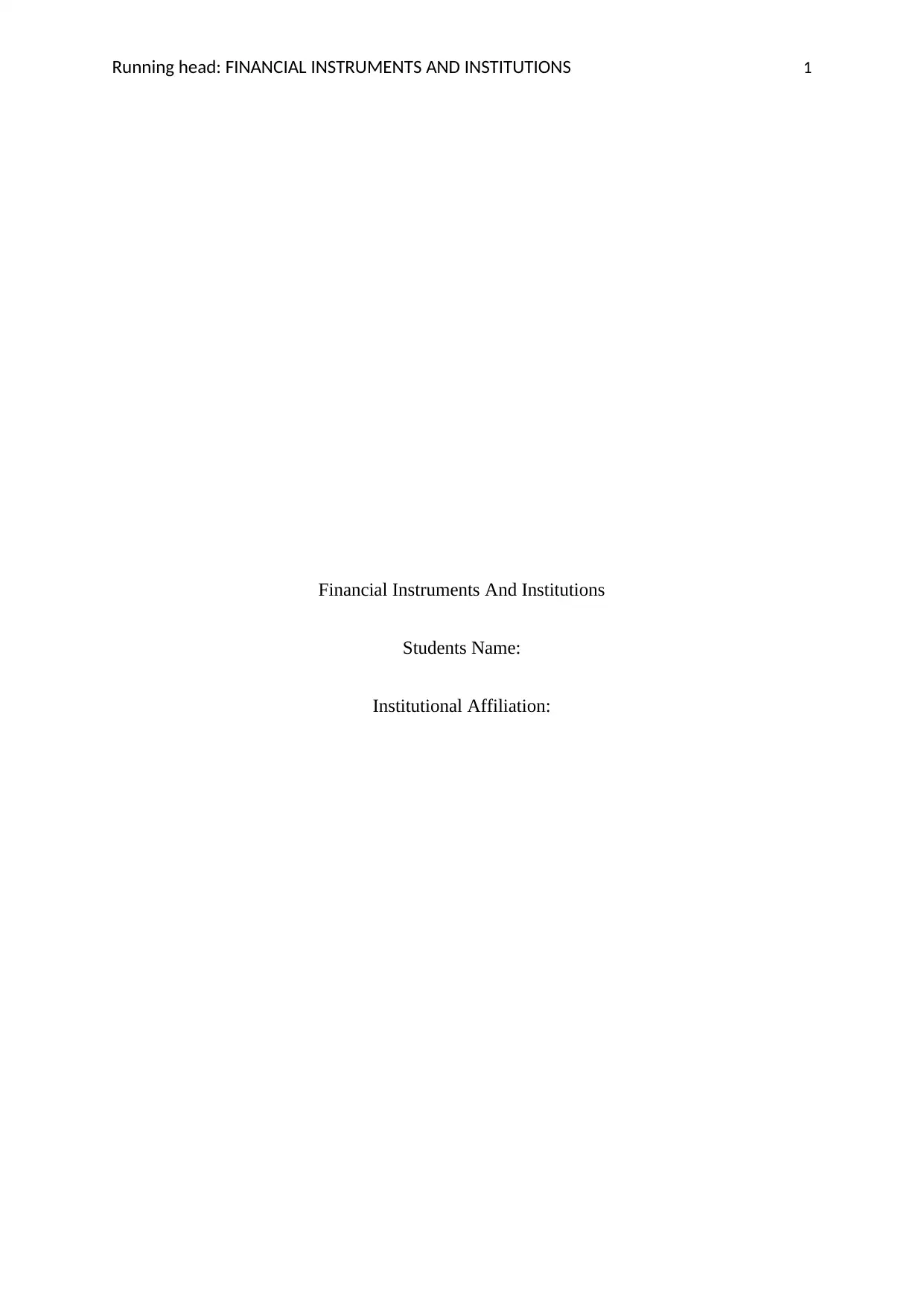Financial Instruments and Institutions: A Comprehensive Report
VerifiedAdded on 2023/03/31
|4
|690
|116
Report
AI Summary
This report analyzes financial instruments and institutions, addressing key aspects of financial markets. The report begins by examining the circumstances under which a central bank might intervene in the foreign exchange market within a floating exchange-rate regime, followed by a discussion on the factors contributing to fluctuations in the AUD/USD exchange rate. The second part of the report focuses on financial risk, defining it and identifying five major risk categories, while also exploring their interrelationships. Finally, the report provides strategic advice to Heritage Bank on managing the risks it confronts, including managing interest rates and risk premiums. The report concludes with an analysis of yield curves pre and post the Global Financial Crisis (GFC), highlighting investor expectations and market performance. The assignment covers topics such as exchange rates, financial risk, central bank interventions, interest rates, and risk management strategies.
1 out of 4











![[object Object]](/_next/static/media/star-bottom.7253800d.svg)